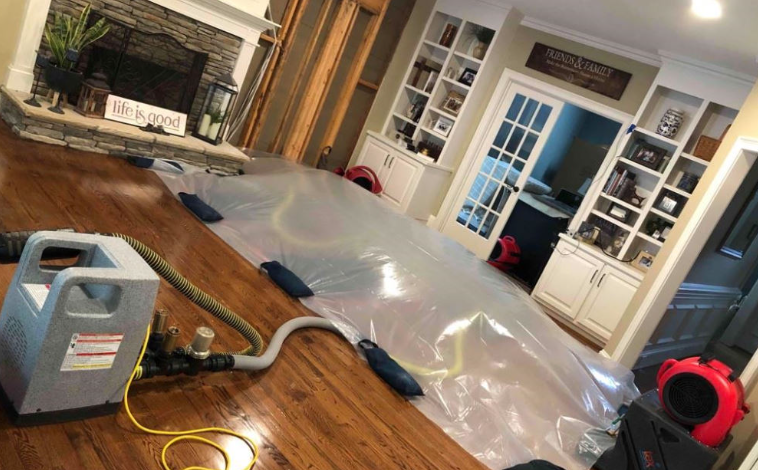Residential Water Damage Repair: A Comprehensive Guide for Homeowners
Residential Water Damage Repair: A Comprehensive Guide for Homeowners

Water damage is one of the most common and costly disasters homeowners can face. Whether caused by natural disasters like floods or internal issues such as leaking pipes, water damage can wreak havoc on your home if not addressed promptly. If you’re dealing with water damage, knowing what to do can save you time, money, and stress. In this guide, we’ll explore everything you need to know about residential water damage repair, its causes, the repair process, and how to prevent future damage.
What Causes Residential Water Damage?
Understanding the common causes of water damage can help you better prepare and respond when the need arises. Below are some of the most frequent culprits:
Leaky Pipes
Aging or corroded pipes can develop small leaks over time. These leaks may seem minor at first, but they can lead to significant water damage if left untreated.
Flooding
Heavy rainfall, hurricanes, or other natural events can cause water levels to rise and seep into your home. Flooding is particularly devastating because of the sheer volume of water involved, often causing structural damage.
Burst Pipes
In colder climates, pipes can freeze and burst during winter, releasing large amounts of water into your home in a short amount of time.
Roof Leaks
A damaged or aging roof can allow water to penetrate your home. Roof leaks often lead to hidden water damage, which can go unnoticed for long periods.
Appliance Malfunctions
Washing machines, dishwashers, water heaters, and HVAC units can all malfunction and cause water to flood areas of your home. Regular maintenance of appliances can help prevent this.
Sewer Backups
When your sewer system backs up, it can cause contaminated water to flood your home. This not only damages the structure but also poses serious health risks.
The Water Damage Repair Process
Repairing water damage is a multi-step process that should be handled quickly and professionally to minimize long-term damage. Here’s what you can expect when addressing residential water damage:
Inspection and Assessment
The first step in any residential water damage repair project is a thorough inspection. Professionals will assess the extent of the damage and identify the source of the water. They will also classify the damage into categories based on contamination levels:
- Category 1: Clean water from a broken pipe or rainwater.
- Category 2: “Gray water” from washing machines, dishwashers, or toilet overflows.
- Category 3: Highly contaminated water, often from sewer backups or flooding.
Based on the category of water damage, specialists will create a plan to repair your home.
Water Removal
The next step is extracting the standing water. This must be done quickly to prevent mold growth, further structural damage, and wood rot. Industrial-grade pumps and vacuums are typically used to remove large amounts of water.
Drying and Dehumidification
After removing the water, the affected areas need to be thoroughly dried. Fans, dehumidifiers, and specialized drying equipment are used to eliminate moisture from walls, flooring, and furniture. Depending on the extent of the damage, this process can take several days.
Cleaning and Sanitizing
Once the area is dried, it’s crucial to clean and sanitize all surfaces. Water from Category 2 or 3 sources may carry harmful bacteria, so thorough disinfection is necessary. Additionally, personal belongings such as carpets, furniture, and clothing may need to be cleaned or discarded.
Repair and Restoration
The final step is repairing and restoring your home to its pre-damage condition. This might include minor repairs like replacing drywall, painting, or installing new flooring, or more significant work such as rebuilding entire sections of the home.
Why Professional Help is Essential
While some minor water damage can be handled with DIY methods, major residential water damage repairs require professional expertise. Here’s why:
- Proper Equipment: Professionals have access to industrial-grade equipment for water extraction, drying, and dehumidification that the average homeowner simply doesn’t have.
- Mold Prevention: Mold can develop within 24-48 hours of water exposure. Specialists are trained to identify and treat mold growth, preventing it from spreading throughout your home.
- Structural Integrity: Water can cause hidden damage to your home’s foundation, walls, and ceilings. An expert can assess these areas and prevent long-term structural issues.
- Insurance Navigation: Dealing with insurance claims can be daunting. Many water damage repair companies work directly with insurance providers to ensure you get the coverage you’re entitled to.
How to Prevent Future Water Damage
Prevention is key to minimizing the risk of water damage in your home. Here are some tips to help you safeguard your property:
Regularly Inspect Plumbing: Check for any leaks or corrosion in pipes, particularly in older homes. Replace damaged pipes promptly to prevent future leaks.
Maintain Your Roof: Schedule annual inspections to catch any roof damage early. Clean gutters regularly to prevent water backup and leaks.
Insulate Pipes: In colder climates, insulate exposed pipes to prevent them from freezing and bursting during winter.
Install Water Detection Devices: Water sensors can alert you to leaks or excess moisture before they cause significant damage.
Maintain Appliances: Regularly service your washing machine, dishwasher, and HVAC system to ensure they’re functioning properly and aren’t at risk of leaking.
Seal Windows and Doors: Ensure that all windows and doors are properly sealed to prevent water from seeping in during storms.
Conclusion
Water damage is a serious issue that requires immediate attention to prevent costly repairs and potential health risks. Whether caused by a burst pipe, leaky roof, or flooding, residential water damage repair is a process that involves inspection, water removal, drying, cleaning, and restoration. While prevention efforts can go a long way in safeguarding your home, when water damage occurs, it’s crucial to act quickly and seek professional help. Click Here




